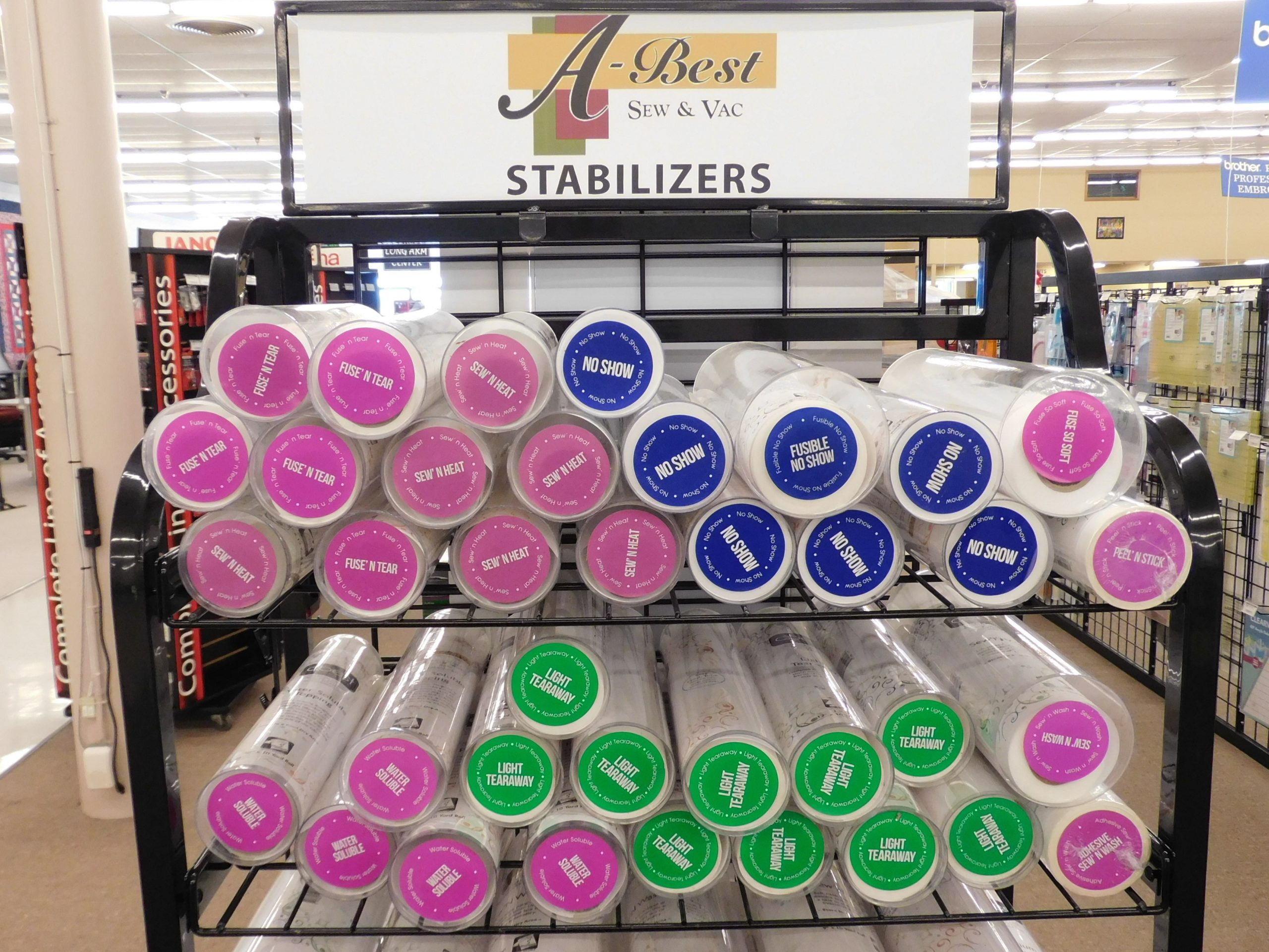Watch the Video – Tip of the Needle – Stabilizing for Perfection
Looking for perfect embroidery without puckering and stretching? Want to save money while not sacrificing quality? Having trouble stabilizing tough to work with fabrics?
Learn the basics of stabilizing and how you can always get perfect results!
Whether working with fleece, knits, terry cloth, etc., it’s important to select the correct stabilizer for the job. But sometimes it’s overwhelming just how many different stabilizers exist, not to mention choosing the right one.
At A-Best, we sell the highest quality stabilizers and will provide expert advice for you project. Come see us or give us a call with your questions! Mention that you read this Tip of the Needle and save 10% on the right stabilizer for your project.
Before we get into specifics, let’s establish an understanding of what stabilizer does. A widely held misconception is that stabilizer is used to stabilize the fabric, when stabilizer is actually designed to hold the stitches.
It is true that stabilizer has influences on how the fabric looks and holds the stitching once the design is done, but there are important reasons to remember that the thread is what needs stabilization.
First, if we’re stabilizing the fabric and sewing on a stretchy material, we would need to use a lot more stabilizer than we would for the same design sewn on canvas. Imagine a thin t-shirt with 5 layers of stabilizer. Who would want to wear that? It would be uncomfortable and after a couple washings it would look stressed, as the design wouldn’t shift with the natural flex of the fabric.
When we’re stabilizing the stitch it shouldn’t matter what we’re sewing on, the design will come out perfect with the correct stabilizer. What’s important is that different fabrics react to stabilizer in different ways. Therefore it is important to match the type of stabilizer to your fabric. Any good stabilizer should hold a stitch.
For instance, if you’re working on a terry cloth towel you will need to stabilize it with a wash away stabilizer + a water-soluble topping. Stabilize the stitch structure on the bottom of the towel and stabilize the stitch’s appearance on the top. It can also be hard to hoop a thicker project, in which case there are different types of sticky stabilizers. You just hoop the stabilizer and stick your project to the top.
The goal is that the stitch always looks perfect! If you miss the topping on terry cloth, the stitch will sink between the loose fibers and you’ll have a poor finished project. When stabilized properly, the stabilizer will dissolve in water and you’ll have a beautiful finished towel without puckering or sunken stitches.
If you’re working on a t-shirt, you need to understand how fabric can stretch post-washing and destroy a once beautiful design. It’s important to use a stabilizer that will flex with the stretch of the shirt without distorting the shirt itself. It’s best for most smaller designs to use a no-show mesh, but if you’re working on a larger design, sometimes it is preferable to use a medium cutaway. After repeated washings, the shirt will maintain its structure and your design will still look great.
If you’re working with a “stable” fabric like canvas, you still need to stabilize the stitch, but a simple tear away will usually work for this, especially if it’s not going to be washed often.
Perhaps the best example is free-standing lace. These designs are made with a special water-soluble stabilizer that completely disappears and leaves a design that is entirely thread with no fabric support. Again, if it’s stabilized properly, the fabric doesn’t have to hold the stitch quality. Once the design is done, the results are locked in.
We will be talking more about stabilizer in the future and get into some more specifics, so make sure you check back every month!
Daniel Hanson
Customer Solution Consultant
A-Best Sew & Vac – Albert Lea, MN






